
In an age when it feels like everyone has several pairs of rock shoes, each for its own special niche, there's still a lot to be said for a single shoe that does a lot of things. The Crux is just such, fitting within that 'performance all-rounder' category. It's slightly down turned, moderately asymmetric, and available in both a velcro and a lace-up, with high and low volume versions, meaning that it has the potential to fit a wide variety of feet.
This review looks at the following models:
- Crux
- Crux Lace
With the Crux we've got a pair of men's and women's (aka. high and low volume) models and we've got our respective reviewers to comment on the idiosyncrasies of each. Understandably there's a lot of common ground between them; however, we'll try to draw on some of the differences, particularly around fit and feel.
In Use
Rob:
I've used the Crux for just about everything: adventurous trad, hard (for me) sport, and bouldering on both friction-based and edgy rock types. Indoors it probably isn't my go-to shoe, as I tend to favour something a little softer, but this isn't to say that it isn't capable - it's just it probably isn't where it's best suited (and I've got a fair few alternatives that are).
The Crux has a good blend of support, which helps make it a good edging shoe. Whilst it isn't the softest out there, the split sole means that it's supple enough to embrace the smears too - especially whilst worn in. That said, the balance undoubtedly sits on the side of edging. I've used it on a wide variety of rock types, including edgier things such as rhyolite and limestone, then rounder rock types such as gritstone and sandstone. It's performed well on each, partly aided by the fact that it's comfortable (a really underrated characteristic).
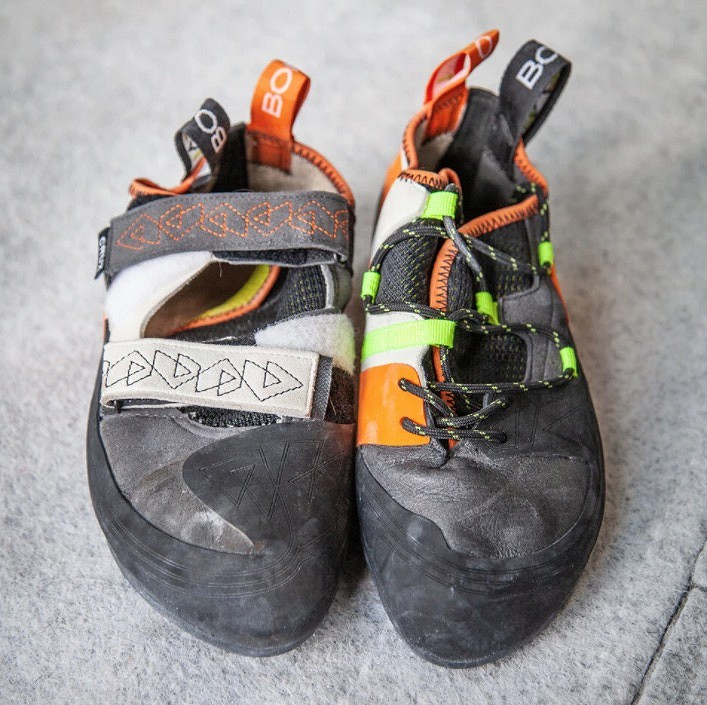
Out of the two I've used the Crux for longer, simply because they've been out for around a year now, whereas the Crux Lace is a more recent release. The difference between the two is actually quite subtle. The good news, in simple terms, is that if the Crux fit you then so too will the Crux Lace. It's got a slightly softer feel in the toe box, as it lacks the rubber toe patch. This makes more of a difference than you might expect to the stiffness of the shoe too. When it comes to the lacing, it (as you might expect) gives you a more precise and customisable fit, which will be ideal to the redpointers out there, but maybe a little less ideal to those wanting to continually have them on and off whilst bouldering.
Penny:
Whilst I've only used the Crux, this is realistically the one I'd want anyway, as my own usage has primarily been for bouldering and sport climbing on limestone in and around the Peak District. It's got a good edge and, like Rob says, is also impressively comfortable, which has meant I've used them both for redpointing, where I really need performance, and for traversing around outdoors, or doing a circuit down the wall too, where comfort is essential.
Fit
Rob:
The Crux/Crux Lace features a slightly downturned, moderately asymmetric last. The forefoot feels like it's erring on the wider end of medium (i.e. a little wide, but not extremely so), while volume-wise they sit somewhere in the middle too, avoiding the extremes, so have the potential to fit a wide range of feet. The heels feel a little narrower than a traditional Boreal last, but are still reasonably broad in the scheme of things. Obviously if you do find them a little too high volume, then you could always give the low volume version a go.
I've already outlined the pros and cons of velcro vs laces above, but it's worth repeating that velcro gives a much broader brush stroke in terms of adjustment, whereas laces allow a much more fine tuned approach. That said, laces require a lot more time and effort to do up compared to the relative convenience of pulling two straps to the side. I haven't personally found any substantial loss of fit with one compared to the other, but suspect it's something that those seeking marginal gains will notice.
Whilst I've definitely found the Crux gave a little, it certainly hasn't stretched a lot, which is thanks to its microfibre upper, and when it came to sizing I went down a single UK shoe size.

Penny:
As you'd expect, the women's version are indeed lower volume, and a little bit narrower, than the men's. Realistically this doesn't have too much to do with whether you're male or female and everything to do with whether or not you've got higher or lower volume feet. It's certainly nice to have the choice, especially if you sit somewhere in the middle like me.
Much like Rob, I've found the Crux to be technical, but also quite comfortable too. It's not radical in terms of its asymmetry and has a fairly relaxed fit, with a bit of a curve, but not being particularly downturned. The end result is something that I too have liked.
Rubber
Boreal have used 4-4.5mm Zenith Pro 2.0 rubber throughout the Crux, varying the thickness by size. In smaller sizes, thinner rubber is used to make them more supple; in larger sizes, thicker rubber is used to make them a little more supportive (to counteract the extra leverage). The Zenith Pro 2.0 rubber really feels like a step up from the brand too, being noticeably stickier than previous compounds, and feeling on a par with the likes of Vibram XS Grip.
In recent years 4-4.5mm represents the thicker end of the spectrum, but it's what gives the Crux its edging ability. It's also why it doesn't feel quite so sensitive, but a balance has to be struck somewhere. Many brands achieve this by using 3.5mm rubber, but that too has its strengths and weaknesses (more sensitivity, less support). Boreal have increased its suppleness through use of a split sole, but even with this there's no doubt that the composition of this shoe favours support and edging - even if it's capable of doing more.
As a part of Boreal's shift towards using more sustainable materials they have also used a recycled rubber in the midsole. Performance-wise this doesn't offer quite the same level of grip, but within the area in which it is used that's not a problem. It's nice to see environmental concessions made where they can be.
Uppers
The Crux features a comfortable, easy access, wide opening tongue, which is constructed using recycled materials. The opposing twin strap closure system provides good adjustment and keeps your foot firmly in place - something that is further aided by the lining, which helps to absorb sweat from your foot. The microfibre/lined combo doesn't make it the coolest shoe to wear, or the lightest - coming in at 510g per pair.
Whilst this isn't a shoe that I'd necessarily foresee outright toe-hooking, mostly because I tend to prefer something a little softer for that sort of thing, the fact there is a toe-patch adds to its technicality and versatility. It's perhaps not as large as some more specialist shoes, which feature a full wrap around, but this is - after all - an all-rounder, and I think its inclusion makes for a stronger offering than if it weren't to have one. It's also been integrated into the design of the toe-box, so you don't - like with some shoes - get too much pain around the knuckle. That said, it does give them a slightly stiffer feel than the Crux Lace (which we'll come onto shortly). These are, after all, quite a comfy pair of shoes.
The Crux Lace is undoubtedly a very similar shoe; however, the lacing does make quite a dramatic difference to tailoring the fit. This will be of interest to a variety of people: either those performing at the top end of their grade spectrum, and looking to get the very most out of their shoes, or sport climbers and trad climbers, who want to get the fit right throughout the duration of their pitch. Those more interested in circuits, where you're likely to take your shoes on and off, probably aren't going to be looking at the lace-up.
Heel
The heel is comfortable in its tensioning. In use, whilst heel hooking, it's stayed firmly in place and feels response on both large and small placements. It is (as we mentioned in fit) at the higher volume end of the spectrum, which is something worth being aware of, as the last thing you'd want is for it to slip.
Summary
Rob:
I've found myself reaching for the Crux a lot lately, in the knowledge that I'll be wearing a comfortable, but technical pair of shoes that will match my ability throughout a wide variety of styles and rock types. Whilst I did like the Crux Lace, for me it was outshone a little by the Crux, which felt pretty flawless; however, for those wishing for a little more comfort in the toe box, or who want something specifically for Trad, the Crux Lace might be the better of the two (although there's not much in it). Finally, it's worth acknowledging that the Zenith Pro 2.0 rubber is a real step up from previous compounds and is something I felt I could really rely on.
Penny:
Thinking of how to summarise the Crux, the words that came immediately to mind were "all-rounder". It's capable of doing a lot of different things, and doing them well, and if you were looking for a single shoe to do a bit of everything, the Crux would be a great option.






































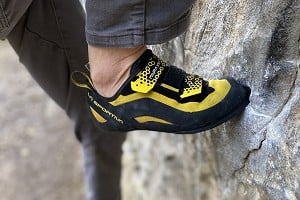
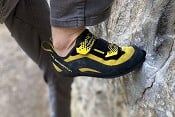
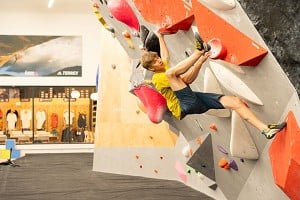
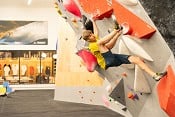


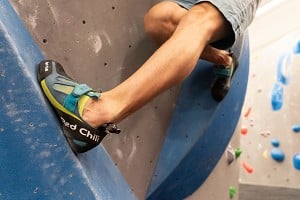
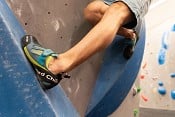
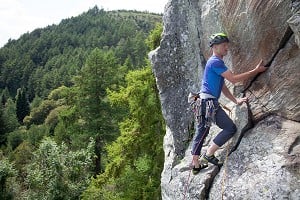



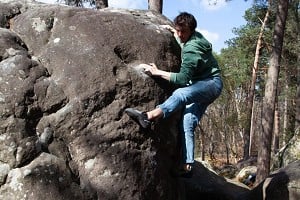

Comments
Super love my velcro crux's - best fitting shoe i've ever found for my basically square feet.
"The Zenith Pro 2.0 rubber really feels like a step up from the brand too, being noticeably stickier than previous compounds, and feeling on a par with the likes of Vibram XS Grip."
Quite a damning indictment of Boreal's other rubbers: this noticeably stickier, step-up rubber is as good as Vibram's lower tier climbing rubber.
That's a strangely negative take on a positive comment.
As per my comments on Zenith Quattro within the relatively recent review of the Boreal Beta and Beta Eco, it wasn't - in my opinion - the grippiest; however, it was, in turn, much more durable. You can't have everything and Boreal have designed that compound with longevity in mind.
When it comes to previous versions of Zenith Pro, I've used (and reviewed) a fair few shoes that have featured that original compound, including the Lynx back in 2015, the Ninja in 2019 and the Ace in 2020. It's been good, but certainly no way near as good as this, which is - in my opinion - a massive step up in terms of performance. That said, it's hard to be objective about these things, as it's not a test - it's a review - hence subjective by nature; however, in use I've found it to make a noticeable difference.
As such, it's pretty far from a damning indictment. Quattro's focus - in my eyes - is durability, Zenith Pro 2.0's is on performance. Yes, it performs better than its predecessor, and yes - in turn that means its predecessor was a poorer performer. Does that mean they were terrible, no - it just means that these are better.
Boreal. Even with the new rubber they are still the best shoes for campusing.
Andy F
Some people don't have good enough footwork to appreciate the benefits of an edging shoe ;-)